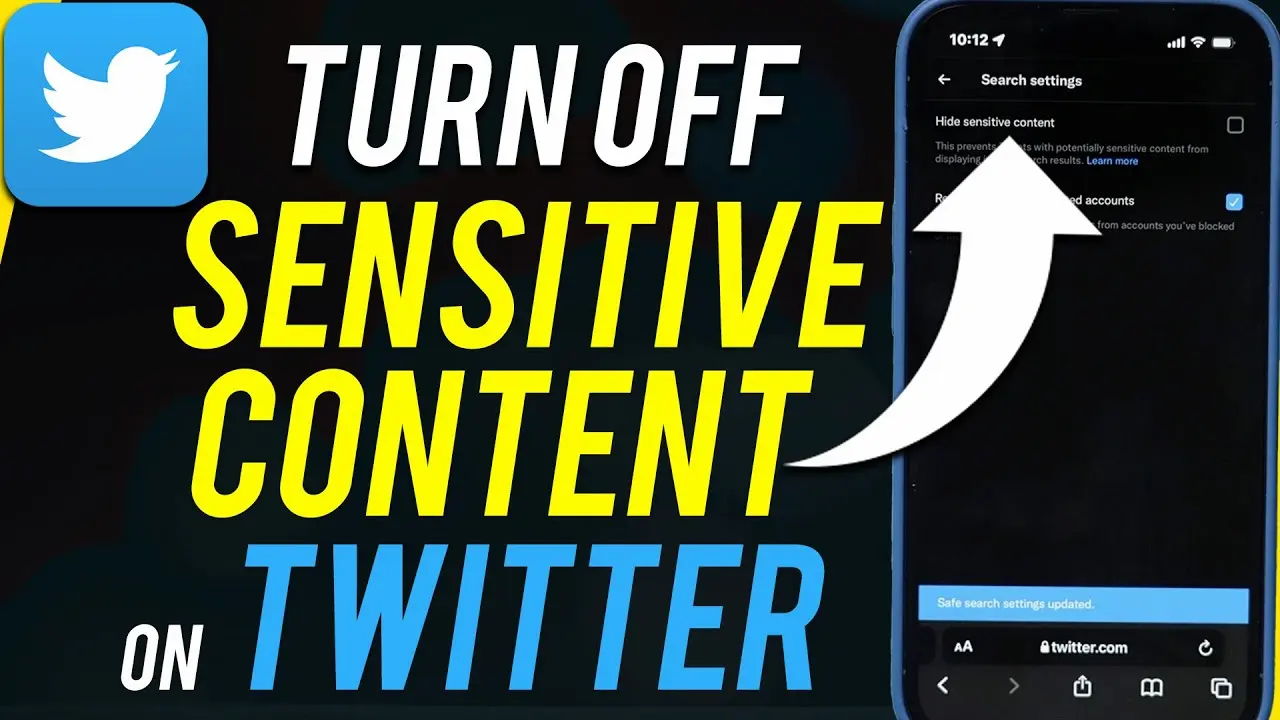Twitter blocks certain tweets that have potentially sensitive content, which includes content involving nudity and violence.
Every time you post or retweet such content, you will get a warning notification that your post includes “potentially sensitive content”.
You can switch off these warning notifications while you can also turn off sensitive content on Twitter.
To help Twitter understand which type of content you are interested in, all accounts have media settings that Twitter users can customize.
In case you can set up your media settings appropriately, Twitter will be able to identify which content is considered sensitive in your case.
You can likewise turn off sensitive content on Twitter and change your feed.
But how can you turn off sensitive content on Twitter?
What Is Considered ‘Sensitive Content’ On Twitter?
Twitter considers sensitive content to be:
- Nudity
- Sexually suggestive content
- Graphic and non-graphic violence
- Content about drugs
- Content about firearms
Sensitive content may also be any type of content shared on Twitter that may be found offensive to certain groups concerning:
- Politics
- Religion
- Race
- Gender
- Sexuality
- Disability
Vulgar language is also considered sensitive content in general, which is why Twitter may filter posts containing such language.
To be able to view sensitive content without warning notifications, you can adjust your media settings.
How Does Twitter Identify Sensitive Content?
To identify sensitive content Twitter uses a special algorithm that was first tested in March 2017.
The feature is designed to warn users about Twitter accounts and tweets that may be offensive and include potentially sensitive content.
At first, with the initial use of Twitter’s sensitive content algorithm, the company didn’t flag content with nudity and violence but did warn users about content that contains pornographic elements or excessive violence.
Twitter’s algorithm also recognizes profanity and bigotry, while Twitter allows users to mark themselves as individuals who post sensitive content.
You can choose to mark the media you post as sensitive content, which you can adjust and set up in your user settings.
Users help Twitter identify sensitive content by marking their Tweets as potentially sensitive content.
Users can always check and uncheck this option in user settings.
Users can customize their search and tweet media preferences.
When it comes to your search results and Twitter feeds, you can choose to:
- Hide sensitive content – this option will prevent posts with sensitive content from appearing in your search results.
- Remove blocked and muted accounts – you can use this option to eliminate search results related to Twitter accounts that you might have blocked or muted.
When it comes to tweet media settings, you can:
- Display media containing sensitive content
- Mark the media you post as tweets as potentially sensitive content – if you consider yourself someone who posts sensitive content in relation to race, politics, religion, or similar topics that may be found offensive to certain demographics, you can mark your tweets as potentially sensitive content
Should You Mark Your Own Media Content as Sensitive?
You can mark your own media as sensitive content via user settings on Twitter, but you don’t necessarily have to, even though your tweets may contain sensitive content.
Twitter uses an algorithm that is designed to recognize, identify and hide sensitive content from users who do not want access to this type of content.
However, users who are marking their content as potentially sensitive help Twitter identify and restrict access to such content for users who don’t want sensitive content to appear in their search.
Twitter protects users who don’t want to view sensitive content that usually includes violence and adult content.
According to the company, Twitter is a place where people come to see what is going on in the world while acknowledging that some people don’t want to be exposed to sensitive topics such as nudity and violence.
Twitter urges users who are sharing sensitive content to mark their tweets as potentially sensitive content in the user settings so that other users are not exposed to such content.
Users who don’t want to see sensitive content may always choose to view content and change their preferences in user settings.
To protect users who don’t want to view sensitive content, Twitter restricts Twitter users from displaying sensitive content on their profile, live videos, banner images, or header.
Some media types are not allowed at all and are prohibited by Twitter on the social platform.
Twitter groups this sensitive media into the following categories:
- Graphic violence – any content that shows someone’s death, serious injuries, medical procedures, and violence in general.
- Adult content – any content that can be categorized as pornography.
- Violent sexual conduct – any content that shows any type of sexual violence such as rape, whether real or simulated.
- Gratuitous gore – any type of content that features an excessively gruesome scene of physical injury, death, or any content that might be shared with a sadistic connotation
- Hateful imagery – any logotype, logo, or image that promotes hostility against any race, religion, sexual orientation, and nationality.
If you don’t mark sensitive content as such, Twitter will restrict your tweets and posts in case someone reports your profile or your tweets.
How To Change Sensitive Content on Twitter?
You can adjust your sensitive content settings via user settings on Twitter, and turn the sensitive content warning notification on or off.
The process is rather simple as you only need to choose option “More” which will lead you to another dropdown menu. Select “Settings and privacy” then “Privacy and safety.”
“Your Twitter activity” will show you options among which is “Content you see”.
Here you can choose to either display or not display sensitive content on Twitter. You can always change the settings.
1. Select “More”
2. Select “Settings and privacy”
3. Select “Privacy and safety”
4. Select “Your Twitter activity”
5. Select “Content you see”
6. Turn off or turn on the sensitive content warning
How To Turn Off Sensitive Content on Twitter App?
If you want to change the sensitive content settings on the Twitter app, you can follow the same steps for Android.
However, you can’t change sensitive content settings if you are using an iPhone or an iPad.
To turn off sensitive content on iPhone and iPad Twitter app, you will need to make the changes via desktop, following the steps listed above.









